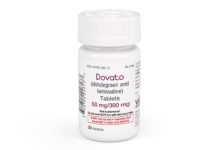This report presents data on HIV and AIDS in 51 of 53 countries in the WHO European Region, and in the European Union and European Economic Area (EU/EEA).
Although HIV is preventable through effective public health measures, significant HIV transmission continues in Europe, in particular in the eastern part of the Region. In 2016, more than 160 000 people were diagnosed with HIV, the highest number of people ever newly diagnosed in one year. Of these, 80% were diagnosed in the eastern part of the Region and 18% in the EU/EEA.
The main transmission mode varied by geographical area, illustrating the diversity in the epidemiology of HIV in Europe. Sexual transmission between men was the most common mode in the EU/EEA and transmission through heterosexual contact and injecting drug use were the main reported transmission modes in the eastern part of the Region. Other findings indicate that too many people throughout the European Region are diagnosed late, increasing the risk of ill health, death and onward HIV transmission.
Similar to recent years, the highest proportion of HIV diagnoses (40%) was reported to be in men who have sex with men (MSM). However, for the first time in a number of years, several countries reported a decline in new HIV diagnoses, even after adjusting for reporting delay.
While the data in this year’s report indicate alarming rates and increases in new diagnoses in some parts of eastern and central Europe over the last decade, at the same time there has been a tendency towards stabilising or even decreasing rates in some EU/EEA countries.
Trends by transmission mode, for example, show that the number of HIV diagnoses among MSM in the EU/EEA decreased slightly in 2016 and the number of heterosexually acquired cases has decreased steadily over the last decade.
Moreover, in the EU/EEA, the number of AIDS cases, and the number of AIDS-related deaths, has consistently declined since the mid-1990s.


 ПОИСК ПО САЙТУ
ПОИСК ПО САЙТУ  поиск по ресурсному центру
поиск по ресурсному центру 



